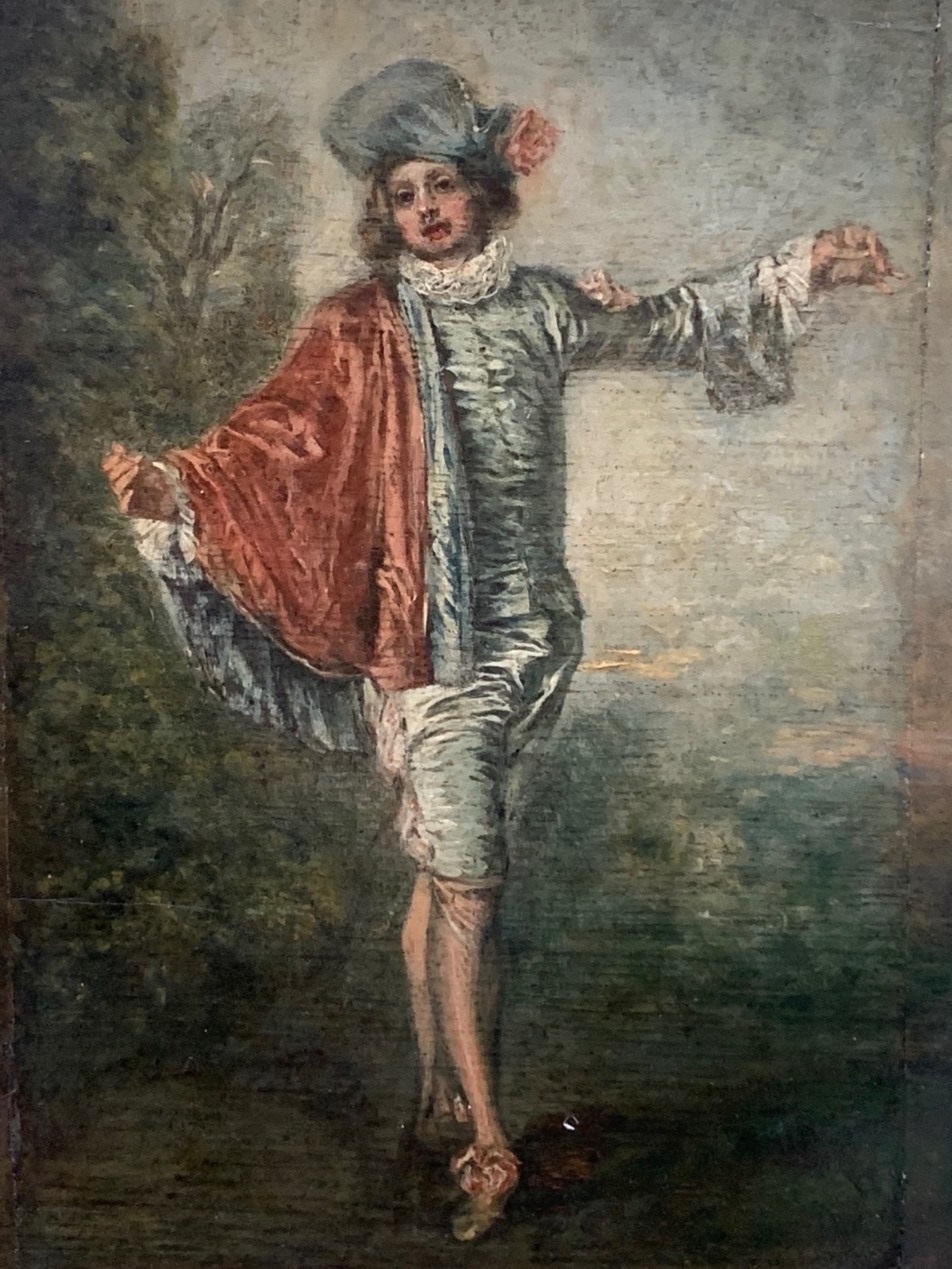

The Diabolo of L’Indifférent
My Louvre by Antoine Compagnon

The Diabolo of L’Indifférent
There are many reasons to love Watteau’s graceful Indifférent, this nonchalant young man dressed in an azure doublet and a pink cape (Sully, room 918). First, he was part of Louis La Caze’s generous donation in 1869, along with his companion, La Finette, and many other masterpieces. Second, this little painting was dear to Proust, who titled an early short story “L’Indifférent.” Third, after the Mona Lisa, stolen in 1911, L’Indifférent was stolen in 1939 in broad daylight, without the watchman seeing a thing, by a fanciful young artist who took it upon himself to clean (and vandalize) the painting before returning it two months later. The artist boasted of having removed a diabolo that was suspended from an invisible string in the dancer’s hands, an instrument supposedly not the work of Watteau. The affair remains murky. Albertine, in In the Shadow of Young Girls in Flower, handles a diabolo “like a nun telling her beads,” but did the toy even exist in France during the Régence? In any case, our charming Indifférent is now exhibited behind glass, as protected as the Mona Lisa, to discourage burglars.